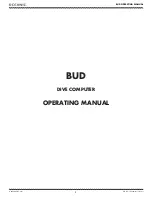
temperature, test environment, cables, and other test fixture differences. You can perform a
calibration by using either the NI-VNA Soft Front Panel (SFP) or the NI-VNA driver API.
1.
Choose whether you want to perform a new calibration or load data saved from a
previous calibration.
2.
To perform a new calibration, complete the following steps:
a)
Set the measurement parameters such as power, frequency, and number of points.
b)
Set IF bandwidth and averaging to minimize noise during calibration.
c)
Choose the proper calibration kit or input calibration standard definitions.
Tip
Keep the reference plane constant between your initial, uncalibrated
measurement and your calibration setup. The reference plane is
established at the location where the VNA connects to the AutoCal
module or to the calibration standard. For example, your reference plane
may be located at the end of an adapter connected to the end of a precision
cable.
d)
Calibrate manually or use automatic calibration.
e)
Verify calibration quality using a known verification standard.
Note
Do not use the same calibration standards that you used for
calibration to perform the verification.
f)
Save the instrument state and calibration.
3.
To load a saved calibration, complete the following steps:
a)
Select the calibration file.
b)
Ensure that the source parameters you specified in step 2b of the
Uncalibrated Measurements with the NI 5632
section match those that were used in
the calibration.
Perform a new calibration if the settings do not match.
Related Information
Refer to the NI Vector Network Analyzers Help for more information about reference planes.
Making Calibrated Measurements with the
NI 5632
Performing calibrated measurements with the NI 5632 is useful when you need to minimize
sources of error so that you can acquire the most accurate data for your test system. You can
perform calibrated measurements using the NI-VNA Soft Front Panel (SFP) or the NI-VNA
driver API.
1.
Measure the DUT.
2.
Ensure you are applying the proper correction from the
3.
Measure and save the DUT parameters.
4.
Verify that the calibrated measurement falls within your expected range.
NI PXIe-5632 Getting Started Guide
|
© National Instruments
|
15






































